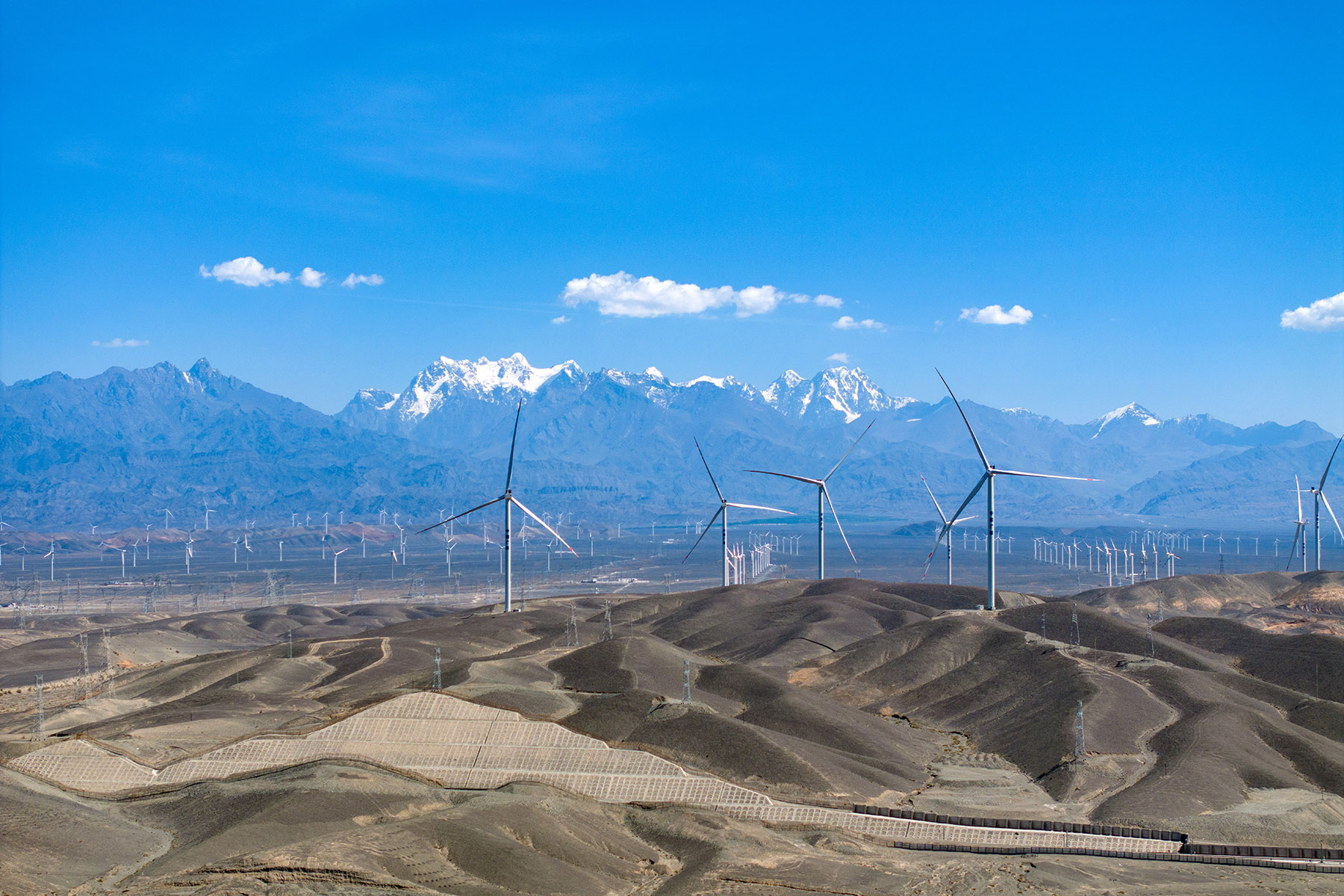
With an abundance of strong winds and long hours of sunlight, Xinjiang Uygur autonomous region in Northwest China has seen its newly installed capacity of new energy rise by 103 percent year-on-year during the first half of this year, ranking first in the country, said the local authorities concerned.
First-half investment in wind and photovoltaic or PV power generation projects in the region, meanwhile, grew by nearly 37 percent year-on-year, accounting for 15.7 percent of fixed-asset investment, which contributed to a 4.5 percentage point increase in fixed-asset investment growth, said the Xinjiang Uygur Autonomous Region Development and Reform Commission.
READ MORE: Market-based drivers key to energy success
Among these, investment in PV power generation projects accounted for more than 70 percent of the total investment in new energy in the region, with a year-on-year growth of 36.5 percent, becoming the main component of the new energy industry layout, it said.
An analyst said increasing investment further facilitates power supply and the transmission of large wind and solar power bases in western regions.
"China has been stepping up efforts accelerating the construction of a new type of power system, promoting high-quality development of new energy and driving large-scale equipment upgrades and renovations," said Luo Zuoxian, head of intelligence and research at the Sinopec Economics and Development Research Institute.
State Grid Corp, China's largest power utility firm, said earlier that the company's annual grid investment surpassed 600 billion yuan ($84 billion) for the first time this year, with a record investment of 71.1 billion yuan in the region.
According to State Grid Xinjiang Electric Power Co, all the new energy generated within the region has been connected to the grid during the first half.
ALSO READ: Green power certificates set record
Xinjiang is rich in clean energy, including wind and solar power. By the end of 2023, clean electricity transmitted from Xinjiang to other places amounted to 210 billion kWh since the transmission program of electricity generated in the western region was launched in November 2010, it said.
This is equivalent to a reduction of about 171.52 million metric tons of carbon dioxide emissions, said the company.
Xinjiang's new energy installed capacity exceeds 80 million kilowatts as of now, accounting for more than 50 percent of the total installed power capacity, said Zheng Ziwen, deputy chief of the new energy and renewable energy division of the commission.
The region will continuously take advantage of local resources to further elevate the development of new energy to a new level, said Zheng.
According to data from the National Energy Administration, in the first half, Xinjiang's newly installed capacity of new energy reached 14.08 million kilowatts, including 4.28 million kilowatts of wind power and 9.8 million kilowatts of PV power, up 103 percent year-on-year. Xinjiang's new energy installed capacity accounts for more than 10 percent of the national total, it said.


